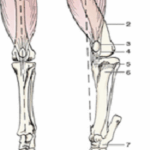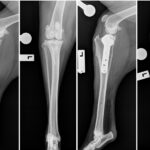With some nice, sunny days here, it is a chance to talk about some of the more common issues we see during springtime, and what you can do to keep you pet healthy over the next few months.
Skin Problems:
 Spring is our busy time for allergic skin disease in dogs. This can show up as ear infections, licking paws, scratching bellies or armpits, or various other issues. I wrote about this last week, so CLICK HERE to read that article.
Spring is our busy time for allergic skin disease in dogs. This can show up as ear infections, licking paws, scratching bellies or armpits, or various other issues. I wrote about this last week, so CLICK HERE to read that article.
Poisons:
Spring is also our busy time of year for man poisonings. These include:
 Snail pellets. No snail pellets are truly “pet safe”. NEVER use snail pellets where your pets can access them. If a dog eats snail pellets, the early signs include salivating and muscle twitching. If you see these signs, call your vet immediately and take the box with you to the vet so we know exactly what type of poison has been used
Snail pellets. No snail pellets are truly “pet safe”. NEVER use snail pellets where your pets can access them. If a dog eats snail pellets, the early signs include salivating and muscle twitching. If you see these signs, call your vet immediately and take the box with you to the vet so we know exactly what type of poison has been used Snake bites. As soon as the weather starts to warm, snakes will be out and about. Most of the cases of snake bite we see are September-December, when the snakes are still a bit sluggish. If you’re worried your dog may have been bitten by a snake, don’t wait to see what happens. Take them to the vet. If they’re not showing sings of envenomation when we see them, we will normally monitor them for several hours as there can be a big delay between being bitten and showing signs.
Snake bites. As soon as the weather starts to warm, snakes will be out and about. Most of the cases of snake bite we see are September-December, when the snakes are still a bit sluggish. If you’re worried your dog may have been bitten by a snake, don’t wait to see what happens. Take them to the vet. If they’re not showing sings of envenomation when we see them, we will normally monitor them for several hours as there can be a big delay between being bitten and showing signs. Fertiliser and Compost. These can make your dog quite unwell, so make sure you keep your dog away from them, especially if you have a dog like a Labrador which will eat anything.
Fertiliser and Compost. These can make your dog quite unwell, so make sure you keep your dog away from them, especially if you have a dog like a Labrador which will eat anything. Rat/Mouse poison. Like snail pellets, these are never “pet safe”. It takes 2-3 days before we start to see signs of poisoning once a dog has eaten these products. If we see a dog within around 1 hour of eating rat poison, we can normally make them vomit and they won’t need any further treatment (they may need a blood test two days latter to check blood clotting times). If it ahs been a bit longer, we can easily treat the dog with vitamin K to combat the toxin.
Rat/Mouse poison. Like snail pellets, these are never “pet safe”. It takes 2-3 days before we start to see signs of poisoning once a dog has eaten these products. If we see a dog within around 1 hour of eating rat poison, we can normally make them vomit and they won’t need any further treatment (they may need a blood test two days latter to check blood clotting times). If it ahs been a bit longer, we can easily treat the dog with vitamin K to combat the toxin. Blow fish. We frequently see dogs eating blow fish when at the beach. This tend to happen because fishermen throw them on the beach rather than back in the water. Although they can be annoying when you’re fishing, throwing them on the beach won’t stop their mates from stealing your bait. All it does is makes the blow fish suffer (it’s not their fault they’re annoying), and puts dogs lives at risk. The best thing you can do is simply throw them back.
Blow fish. We frequently see dogs eating blow fish when at the beach. This tend to happen because fishermen throw them on the beach rather than back in the water. Although they can be annoying when you’re fishing, throwing them on the beach won’t stop their mates from stealing your bait. All it does is makes the blow fish suffer (it’s not their fault they’re annoying), and puts dogs lives at risk. The best thing you can do is simply throw them back.
Food Related Problems:
 Warm weather means barbeques. Great for us, not so good for dogs. We see several dogs each year become unwell from eating too much fatty food at a barbeque, or by eating onions or garlic that has been left over. As much as they make look at you with their sad eyes, be strong and resist. Make sure you don’t leave food lying around within a dog’s reach.
Warm weather means barbeques. Great for us, not so good for dogs. We see several dogs each year become unwell from eating too much fatty food at a barbeque, or by eating onions or garlic that has been left over. As much as they make look at you with their sad eyes, be strong and resist. Make sure you don’t leave food lying around within a dog’s reach.
Also make sure you cover your barbeque once you have finished cooking. We occasionally see cats with burnt paws after they have jumped onto a hot barbeque.
Hot Cars:
 It’s frustrating to have to keep raising this point, but every year we still see dogs that have been locked in hot cars. Even on a 30 degree day, the inside of a car can become dangerously hot within minutes. NEVER leave your pet in a car.
It’s frustrating to have to keep raising this point, but every year we still see dogs that have been locked in hot cars. Even on a 30 degree day, the inside of a car can become dangerously hot within minutes. NEVER leave your pet in a car.
Hot Pavement:
When you take your dog for a walk on a hot day, put the back of your hand on the pavement. If it’s too hot to leave it there comfortably for 15 seconds, it’s too hot to walk your dog on it.
Mosquitoes:
 The biggest risk from mosquitoes is Heartworm disease. Although we fortunately live in a low-risk area, we still recommend using Heartworm preventatives for dogs. It’s a very easy problem to prevent, but very difficult to treat. For more information on Heartworm disease, CLICK HERE
The biggest risk from mosquitoes is Heartworm disease. Although we fortunately live in a low-risk area, we still recommend using Heartworm preventatives for dogs. It’s a very easy problem to prevent, but very difficult to treat. For more information on Heartworm disease, CLICK HERE
Parvovirus:
 Every spring and summer for the last six years, we have seem multiple cases of Parvovirus infection (Parvo). PLEASE vaccinate your dog. It doesn’t matter if they don’t meet other dogs, if they’re old or if they’re young and healthy. They are all at risk, and vaccination is the only way to prevent this terrible disease. It costs just $110 dollars to cover an adult dog for 3 years against parvo, but between $3000 and $5000 to treat.
Every spring and summer for the last six years, we have seem multiple cases of Parvovirus infection (Parvo). PLEASE vaccinate your dog. It doesn’t matter if they don’t meet other dogs, if they’re old or if they’re young and healthy. They are all at risk, and vaccination is the only way to prevent this terrible disease. It costs just $110 dollars to cover an adult dog for 3 years against parvo, but between $3000 and $5000 to treat.
So, what does spring really mean for keeping your dog healthy? Be proactive, plan ahead and if you need advice, give us a call. Enjoy the sunshine!


